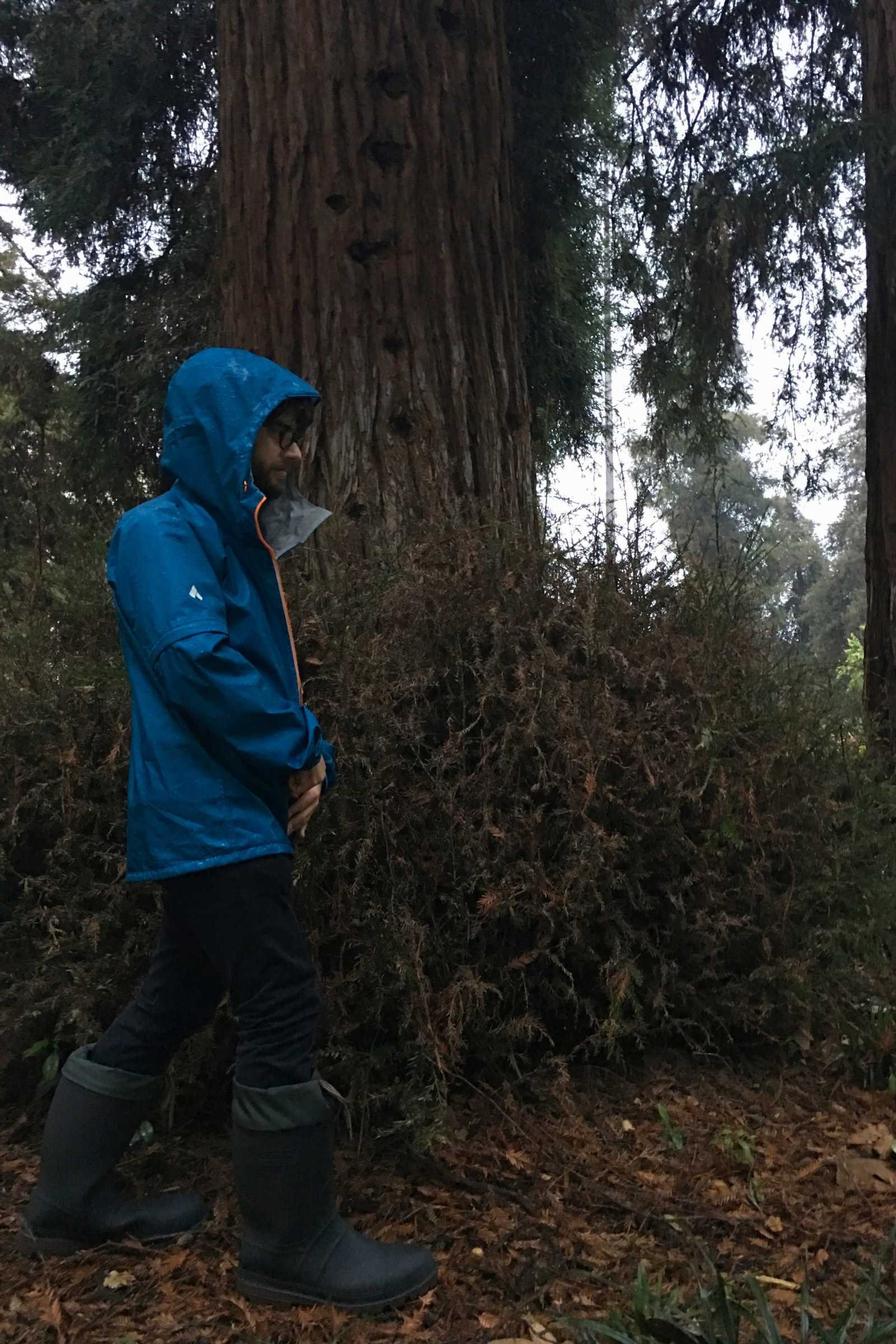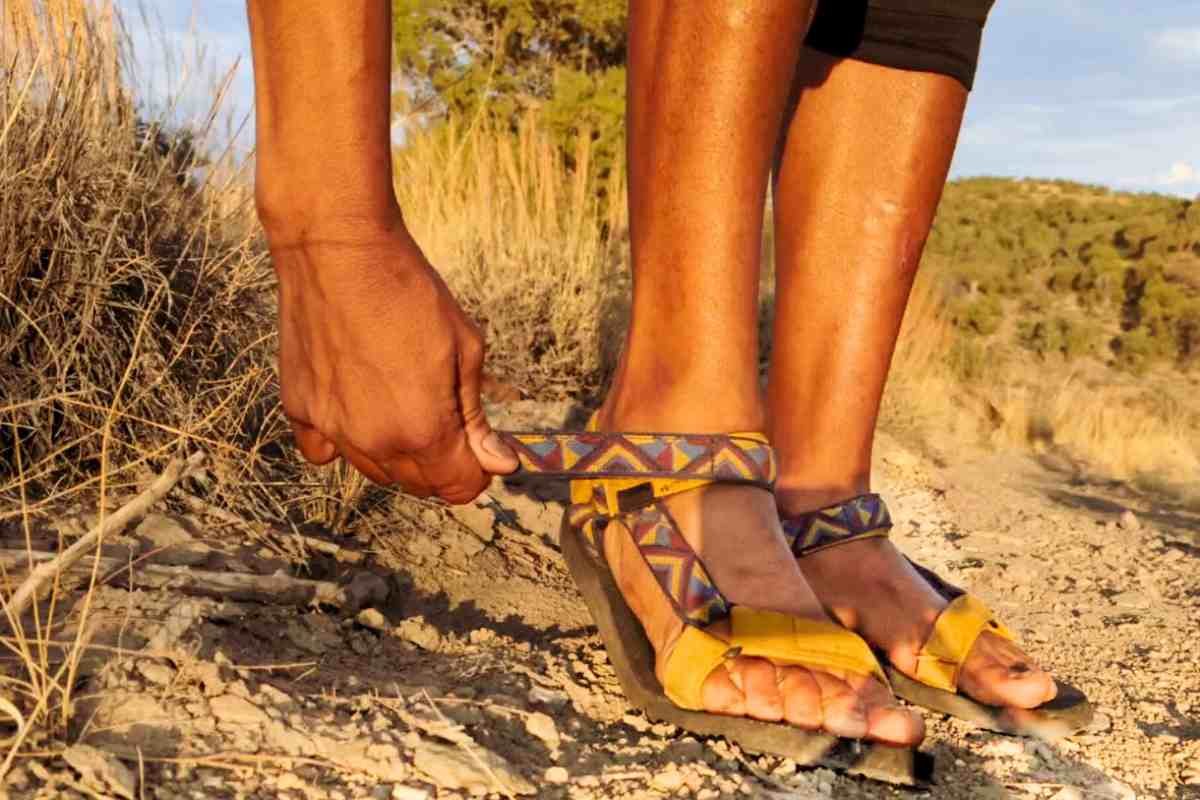Best Men’s Rain Boots of 2025
Rubber Rain Boots, Waterproof Commuter Rain Boots And Work Boots For Rain, Mud, And Puddles
March 25th, 2025, updated to include new testing notes, detailed photos of boots in action, size info, and remove discontinued products
Home > Gear Reviews > Footwear
From rainforests to seaside squalls, we trudged through muck and mire in search of the best men’s rain boots to keep feet warm, dry, and comfortable.
Focusing on waterproofness, fit, comfort, and traction, we narrowed the contenders down and chose top winners for every type of outdoor activity and budget.
As a raft guide, climber, backpacker and skier who has spent years guiding, working, and playing in Alaska, Maine, Colorado, and other wet and cold places, I know my rain boots. After writing our Best Women’s Rain Boots guide, I collaborated with our men’s testers to compile our men’s guide.
Whether you’re looking for the best waterproof hiking boots, the best boots for traction, or great waterproof boots to wear around town, our list includes nine options to keep your feet happy until spring.
Looking for women’s rain boots? See our Best Women’s Rain Boots guide
Related: Best Lightweight Rain Jackets and Best Rain Pants for Hiking
We create reader-supported, objective gear reviews independently selected by our editors. This story may contain affiliate links, which help fund our website. When you click on the links to purchase gear, we may get a commission, allowing us to continue running the site without costing you an extra cent. Thank you for supporting our mission of outdoor coverage for every body! Learn more.
Comparison Table
| MEN'S RAIN BOOTS | TREELINE AWARD | MSRP* | HEIGHT | CLOSURE | WATERPROOF | SIZES AVAILABLE |
|---|---|---|---|---|---|---|
| XTRATUF Legacy | Best overall Read why |
150 | 12” or 15” | Slip on | Yes | 7 - 15 |
| XTRATUF Deck Boots | Best ankle Read why |
105 | 6" | Slip on, over the ankle | Yes | 7 - 14, wide |
| Original Muckboot Wetland | Best insulated Read why |
160 | 17” | Slip on | Yes | 5 -15 |
| Blundstone Original Chelsea | Best walking Read why |
190 | 4.5” | Slip on, over the ankle | Yes | 3 - 14 |
| LL Bean Boots 8" | Best lace-up Read why |
149 | 8” | Lace-up, over the ankle | Yes (mostly) | 7 - 14 |
The Winners
Best Overall Men’s Rain Boots: Xtratuf Legacy
Sizes available: 7 - 15
Shaft Height: 12” or 15”
Footwear Closure: slip on
Waterproof: yes
What we liked: waterproof, unbeatable traction, very comfortable, great arch support, versatility throughout cooler months, height adjustment with roll-top, performance fit and flexibility around the ankle minimizes heal rubbing and blisters, durability
What we didn’t like: Not a budget boot, may need to size down from your street shoe, can get toasty in warmer weather
The author used to hike 4-8 miles every day in XTRATUF Legacies, 5 days a week, in Southeast Alaska’s temperate rainforest – as did every one of the guides who worked alongside her. Their traction on the slip resistant chevron rubber sole is unbeatable. (Our co-founder, Liz, even soaped up her linoleum living room floor and practiced slipping and sliding with a dozen different rubber rain boots. The XTRATUF traction was so good, she barely moved; you can see a video of her doing this on Good Morning America!) They are incredibly comfortable with an ankle and heel cup that makes walking easy–which is rare in rubber rain boots.
Xtratuf Legacy
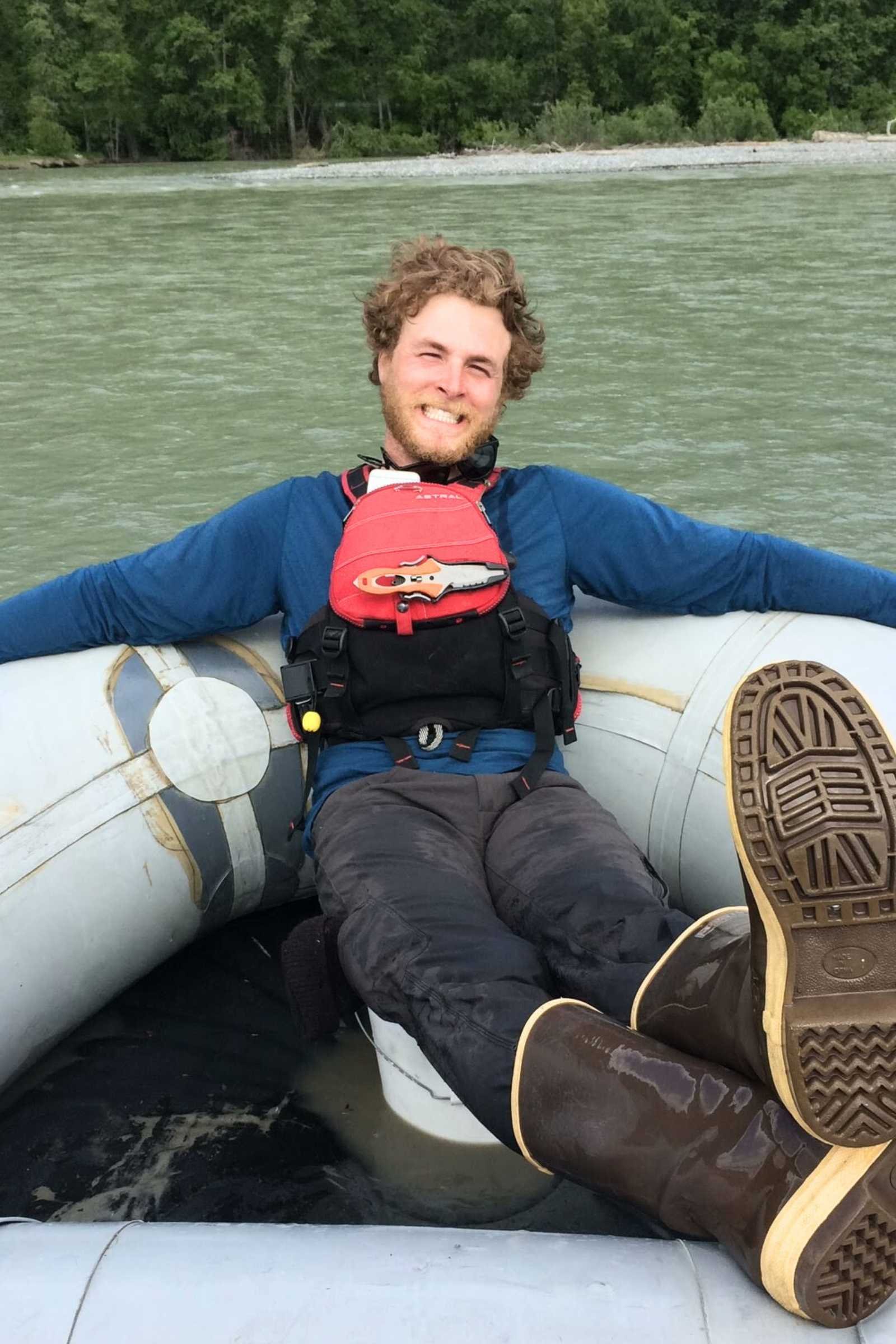


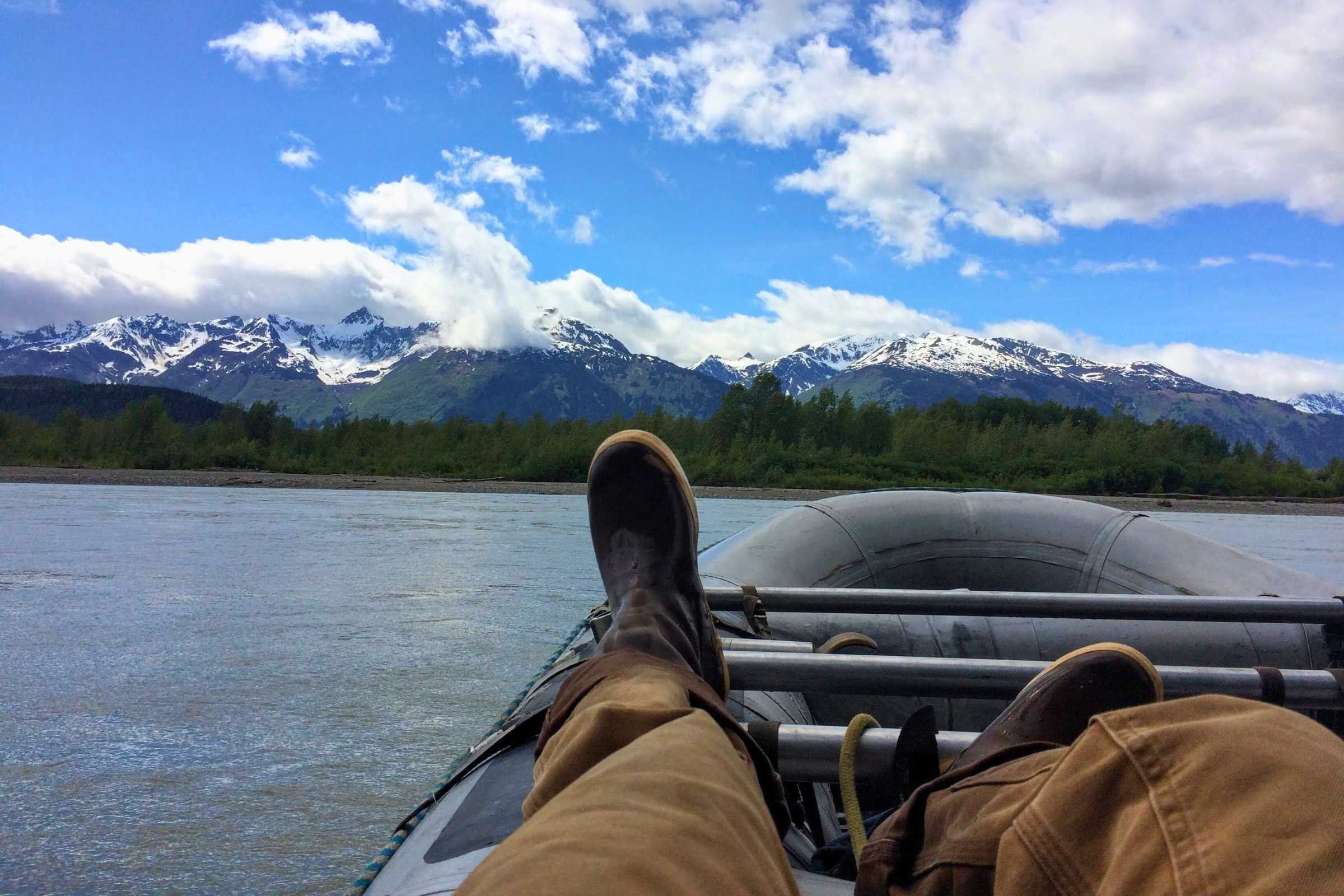
-
These boots were designed to sea water and sludge out of fisherfolks’ feet, and they do their job quite well. (Note: they might not be the most aesthetic, but they do make a statement.) Sticking to their fishing roots, the Legacies are acid chemical resistant and Viral Penetration Resistant per ASTM F1671 / F1671M - 13.
That’s why these boots not only make a statement, but are a solid work boot, too. The author has worn the XTRATUF Legacies for work assignments from raft guiding in Alaska to emergency response calls with fire departments and ambulance companies in Maine.
The Legacies are lined with a thin layer of nylon to protect your toes from cold rubber. But as Outdoor Gear Lab warns, “Added warmth is not a priority with these boots.” Your toes may get very cold in temperatures close to freezing, as uninsulated rubber does not hold heat well. If you get cold easily, we recommend checking out the insulated version of these boots. The non-insulated boots are only a good option for those whose feet get cold easily if you size up for thick, warm socks.
-
For best fit, we recommend going down about a half size. (The author generally wears a 9-9.5, and wears a 9 in XTRATUFs.) This prevents heel rubbing and blisters, and the thick soles give you great arch support.
I've had people buying newer Tufs mention the boot feels tighter on their calves now than older versions. If you're concerned about calf width, check out the "wide calf option" but stick with the sizing down – you don’t want your feet to be flopping around inside of a big rubber boot!
For more info, read our in-depth, long-term review of the Xtratuf Legacy boots.
Best Men’s Ankle Rain Boots: Xtratuf Deck Boots
Sizes available: 7 - 14, wide
Shaft Height: 6”
Footwear Closure: slip on, over the ankle
Waterproof: Yes
What we liked: Hands-free slide on, comfort, temperature moderation, waterproofness, durability, anti-slip
What we didn’t like: Feet get wet in downpours or rocks get into toes from wide entrance
There’s a reason that XTRATUF’s Deck Boots won our top spots for best ankle and slip-on rain boots for both men and women: they’re that universally beloved. Take the reliability and comfort of the XTRATUF Legacy, shorten the height, make them easier to slide on, and make them even slicker to wear out on the town – you’ve found the Deck Boot.
Utilizing the core design of the Legacy boot (anti-slip, waterproof and durable rubber or leather, comfortable to wear on long days on your feet) XTRATUF listened to the fisherfolk and laborers who wanted something more comfortable for errand runs and hanging out in the local diner, and our testers agreed: they delivered. We tested the Deck boots for more than four years and they have proven themselves both sea and town-worthy.
Xtratuf Deck Boots

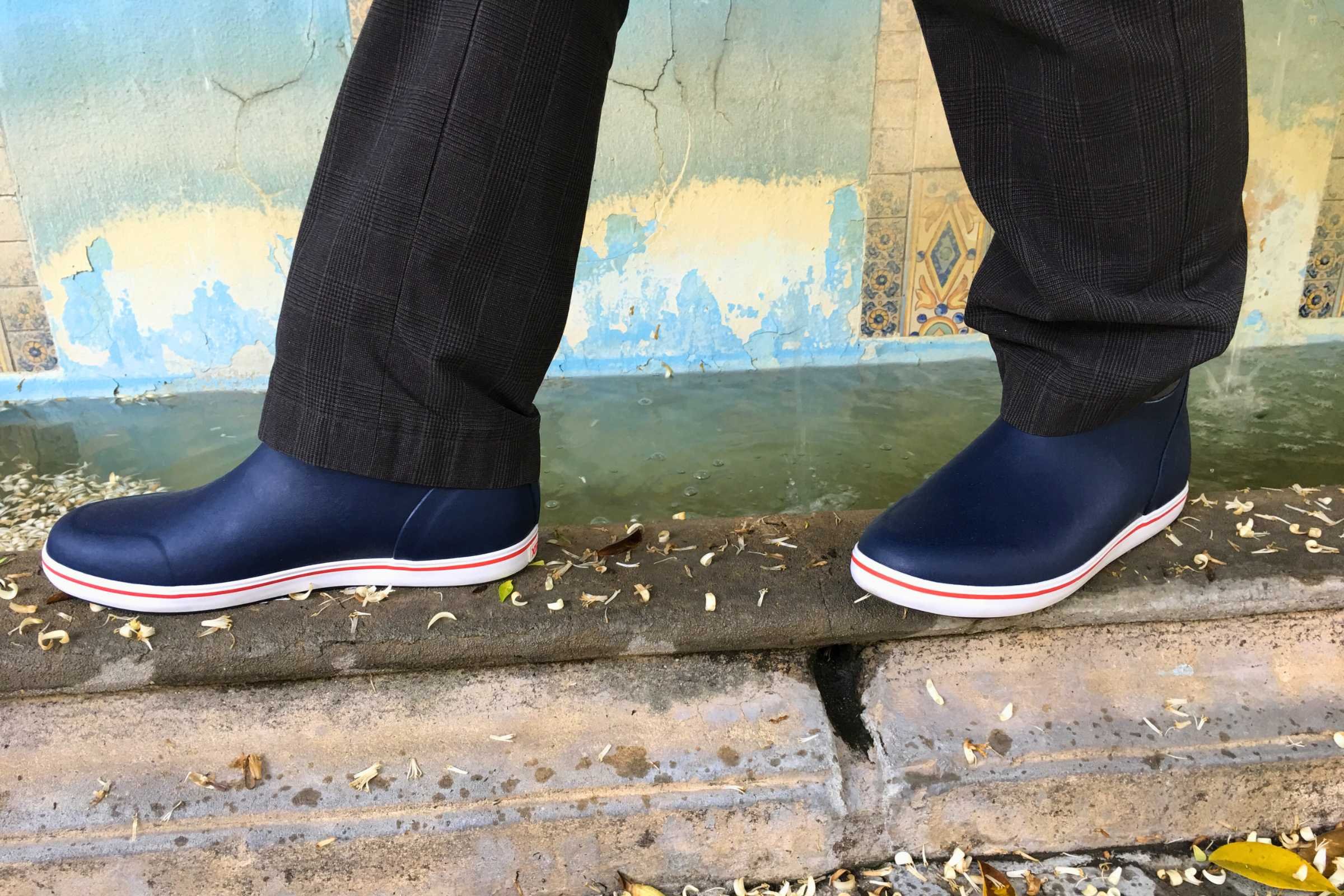
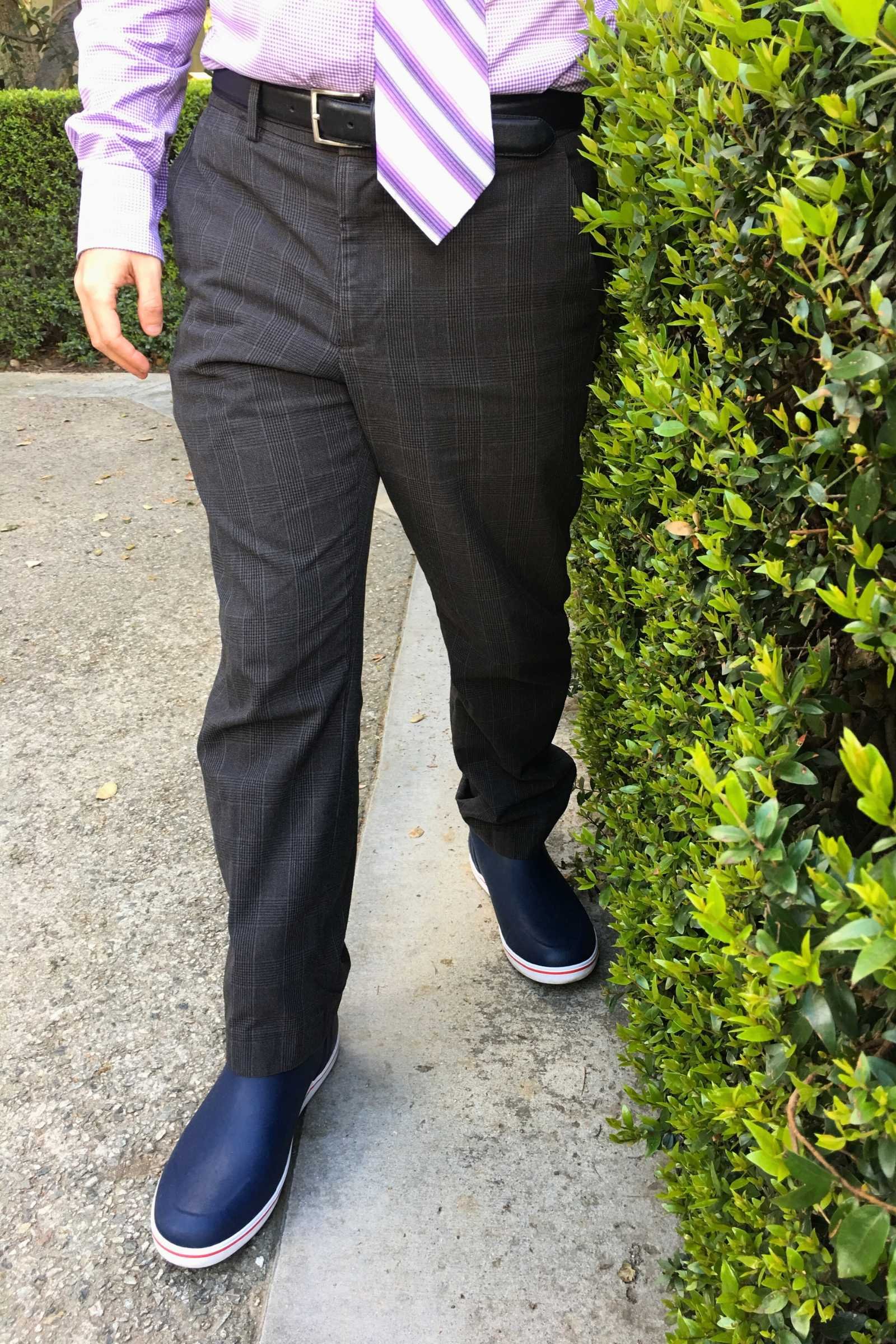
-
The XTRATUF Deck Boots are supremely comfortable — testers can truly slide their feet in and out hands-free, which makes them our go-to slip-on boots to keep by the front door. If you need to, however, two pull tabs at the front and back give you all the assistance you need to pull these boots back on. The wide shaft opening allows for additional airflow during hotter days, where calf-high boots can prove overkill on deck and in town.
The neoprene uppers are comfortable even on bare ankles, and prevent chafing, making these a great option to wear with shorts and ankle socks while keeping your toes covered.
-
The only downfall to these boots can come from that wide shaft opening: in heavy downpours, standing still can cause a flood, while moving too quickly through mud can kick up and into your shoes. However, the good outweighs the bad when it comes to the easy slide-in capabilities. If it’s pouring buckets out, switch to the Legacies.
-
Molded EVA foam insoles give you the supportive padding you need for long days bustling around. Testers also loved how well the XPRESSCOOL™ moisture-wicking evaporative liners worked, providing mega antimicrobial odor protection. You’ll be grateful for the stink-free feet in the middle of summer showers!
XTRATUF kept with the same tried-and-true design for their Deck Boots with chevron rubber treads, although the lugs on the Deck Boots aren’t quite as deep as the XTRATUF Legacies. These boots work well on slick decks and sidewalks, plus wet rocks and puddle-lined parking lots.
-
While the loose ankles don’t offer a lot in the way of stabilization, the footbeds run true to size to keep you comfortable and upright with great grip. We cannot stress enough — these boots are testers’ favorites when it comes to ease and reliability. Even a die-hard New Englander whose entire closet consisted of L.L.Bean boots admitted that he preferred the comfort and ease of slipping into XTRATUFs!
Best Men’s Insulated Rain Boots For Work: Muckboot Wetland
Sizes available: 5 -15
Shaft Height: 17”
Footwear Closure: Slip on
Waterproof: Yes
What we liked: Rugged, durable, warm, comfortable, easy to stand in for multiple hours, great tread
What we didn’t like: Gets toasty above 50ºF
We dubbed the Muckboot Wetlands our draft horse of the rain boot test—they were steadfast, reliable, comfortable, and never let us down in the thick of things.
When the mud and rain were just this side of freezing and there was work to be done—from feeding cattle and birthing new calves to hauling cars out of the mud and responding to emergency scenes in flood conditions—the Muckboot Wetlands earned our trust as the best men’s insulated rain boots for work conditions. While these boots might be a little too warm for everyday use in summer rain, they can’t be beat when the mud is knee-deep and chores need doing.
Muckboot Wetlands
-
We nearly dubbed these boots our Most Comfortable Pick, and if they weren’t so good at working, we would have. These boots sport a lightweight cushioned EVA midsole for additional comfort when you’re on your feet for 12 hours a day.
For your ankles and calves, they use a waterproof 5mm neoprene liner that insulates, bends well as you walk, crouch, and drive, and avoids blisters by contouring to your feet.
Breathable mesh also helps with building up sweat on warmer days, while the stretch-fit top binding sits snugly on your calf to protect you from water or mud getting inside your boot.
Of our four testers who have put the Wetlands to the test for thousands of collective hours, these boots stand up to tough conditions across the continent without discomfort. (High praise from tough midwestern farmers and New England rescue crews!)
-
The 17-inch tall Muckboot Wetlands boots were our tallest boots to test by far, making them the best for deep water and thick mud conditions. They utilize a rubber exterior that extends up to your calves, which protects you better against brush, logs, rocks and critters.
The upper mesh lining, however, allows your feet to breathe while you’re trudging through fields or swinging hay bales. Along with the comfortable aspects—like the EVA molded footbeds and neoprene—our testers raved about the tread. “It was like putting a pair of tractor tires on my feet,” said one Iowa farmer. “I could motor through anywhere and get things done, whether the puddles were past my ankles or the mud was more slippery than ice.”
Thanks to a rugged molded outsole and deep tread lugs, our testers could transition from snow and ice to rain and muck in this same boot in the space of a day. That versatility made it our top choice for insulated work rain boots.
Best Men’s Rain Boots for walking: Blundstone Original Chelsea Boots
Sizes available: 3 - 14
Shaft Height: 4.5”
Footwear Closure: Slip on, over the ankle
Waterproof: Yes
What we liked: Classic look, well-made with durable materials that last for years, comfort increases with wear, waterproof
What we didn’t like: Tough to pull on/take off with first few wears, pricey
You’ve found it — the rain boot that can tackle puddles in the park, sleet in the city, conference calls in the office, and mud in the back pastures. Unlike the rubber rain boots in this guide, the suede in the Blundstone Classic Chelsea flexes. Yet despite the stylish look, they are surprisingly waterproof and suitable for long walks in the rain and on puddle-filled streets.
Our testers have walked hundreds of miles in these boots over forests and mile-high mainstreets, over many years. They continue to wow us with their comfort and waterproofness. Style options abound from suede of different colors to vegan options – so finding something to match your personal style is not an issue.
All of these qualities led us to find our best walking rain boots winner in the Blundstone Classic Chelsea boot series. (They also won our award for Best Men’s Winter Boots for City Walking. There’s a reason they keep winning!) You can read our in-depth review on those Blundstone boots here.
Blundstone Original Chelsea Boots
-
Like the L.L.Bean 8” Bean Boot, Blundstone hasn’t changed much about these casual boots in their 150 years of business. The aesthetic and function has changed minimally––slip-on designs rather than laces, for example, and a cushioning Shock Protection System (SPS) midsole rather than wooden soles—which preserves the heritage of Blundstones while keeping the footwear relevant for a new era. SPS is designed to disperse shock when your foot strikes the ground, which reduces the amount of stress to your skeletal system. (Read: happier feet and joints for longer, better walks!)
-
Blundstone leather boots also come with removable, ergonomically-designed EVA footbeds for extra cushion and support. The soles utilize a steel shank that runs down the middle, which adds rigidity to support and stabilize these ankle boots. Their soles also sport 4mm-deep treads for good grip on slush, mud, and pavement alike.
-
Keep in mind that Blundstones’ half-sizes are not any longer, only wider than their full sizes (e.g., a 7.5 is the same length as a 7, but slightly wider). Some places also sell Blundstones in their traditional Australian sizes. Make sure to check the country-specific sizes before purchasing!
-
The Blundstone Originals we recommend are also known as the Blundstone 500. They look deceptively similar to the Blundstone Classics, also known as the Blundstone 550. So what's the difference?
The Classics 550 have a wider fit with more cushioning in the foot bed and leather lining that feels warmer. However, that extra warmth can be too much for some people, especially if you're walking a lot.
In contrast, the Blundstone Original 500 that we recommend is lined with cotton, which breathes better. We think more breathability is a better option for most people who are walking to work or around town in their Blundstones.
However, one thing to watch for is the Originals have a snugger fit. So if you've got wide feet, go with the Classics.
Best Men’s Lace-Up Rain Boots: L.L.Bean Boots 8”
Sizes available: 7 - 14
Shaft Height: 8”
Footwear Closure: Lace-up, over the ankle
Waterproof: Yes (mostly)
What we liked: Classic duck boot look, tall enough to survive puddles, laces up tight against water, leather, handmade in Maine
What we didn’t like: Not suited for deep puddles or extended soaks as water can seep in through tongue gusset, runs large
Mainers know rain and mud just as well as they know snow, and they produced one of the most popular rain boots of all time because of those elements: the lace-up L.L.Bean duck boot. From the Downeast coast to deep in the forest to college campuses and bustling downtowns, the Bean boot brings both style and comfort to your toesies.
Need to throw on a pair of boots to head out to the grocery store or pick up the kids from school? Say no more — slip your feet in, lace them up (or don’t, you rebel) and brave those soaked streets. We love these boots so much that they’ve won our Best Men’s Casual Insulated Winter Boot, our Best Women’s Winter Boot for Walking Around Town, and we wrote an in-depth review of our favorites, the Bean boots.
L.L.Bean Boots 8”

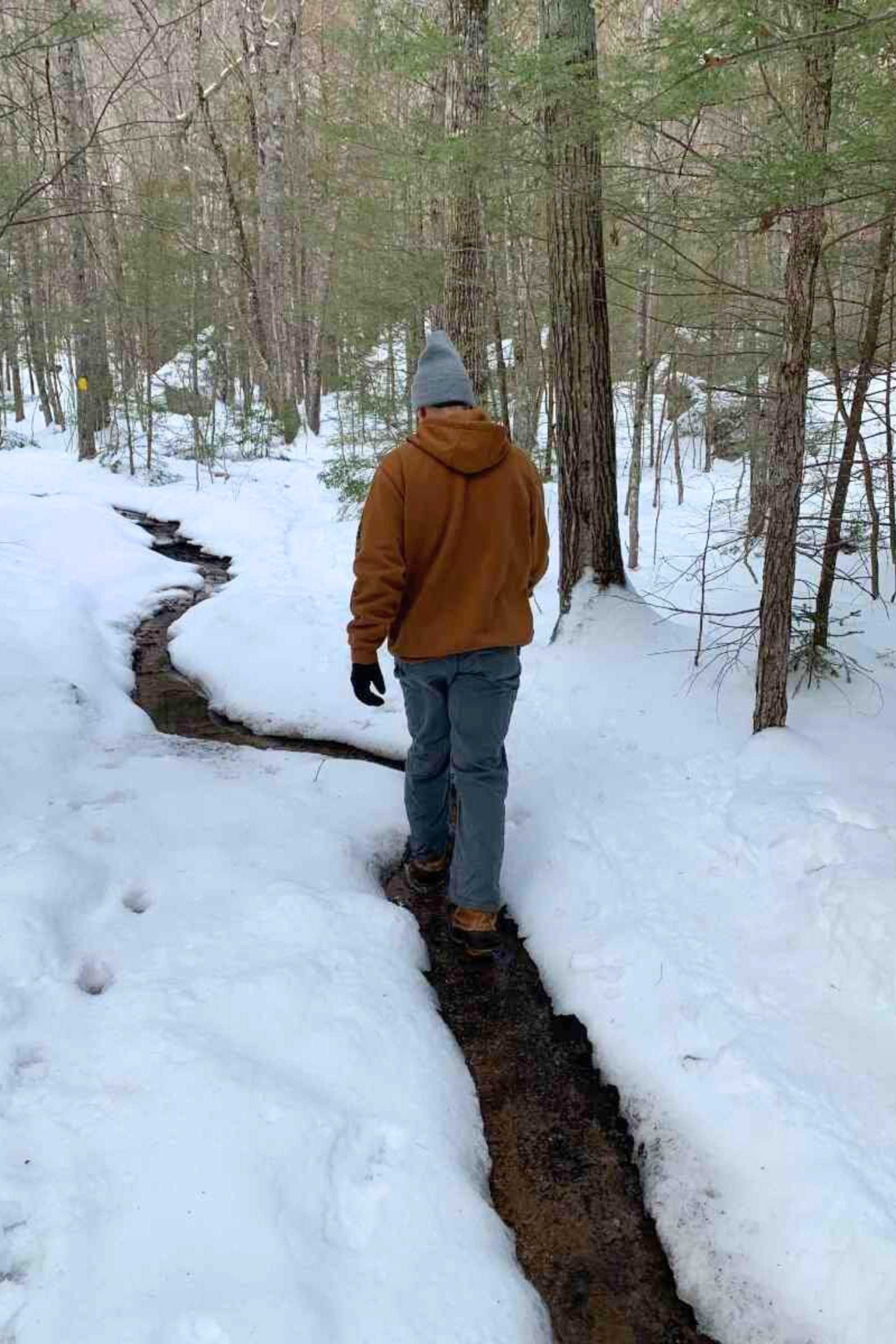
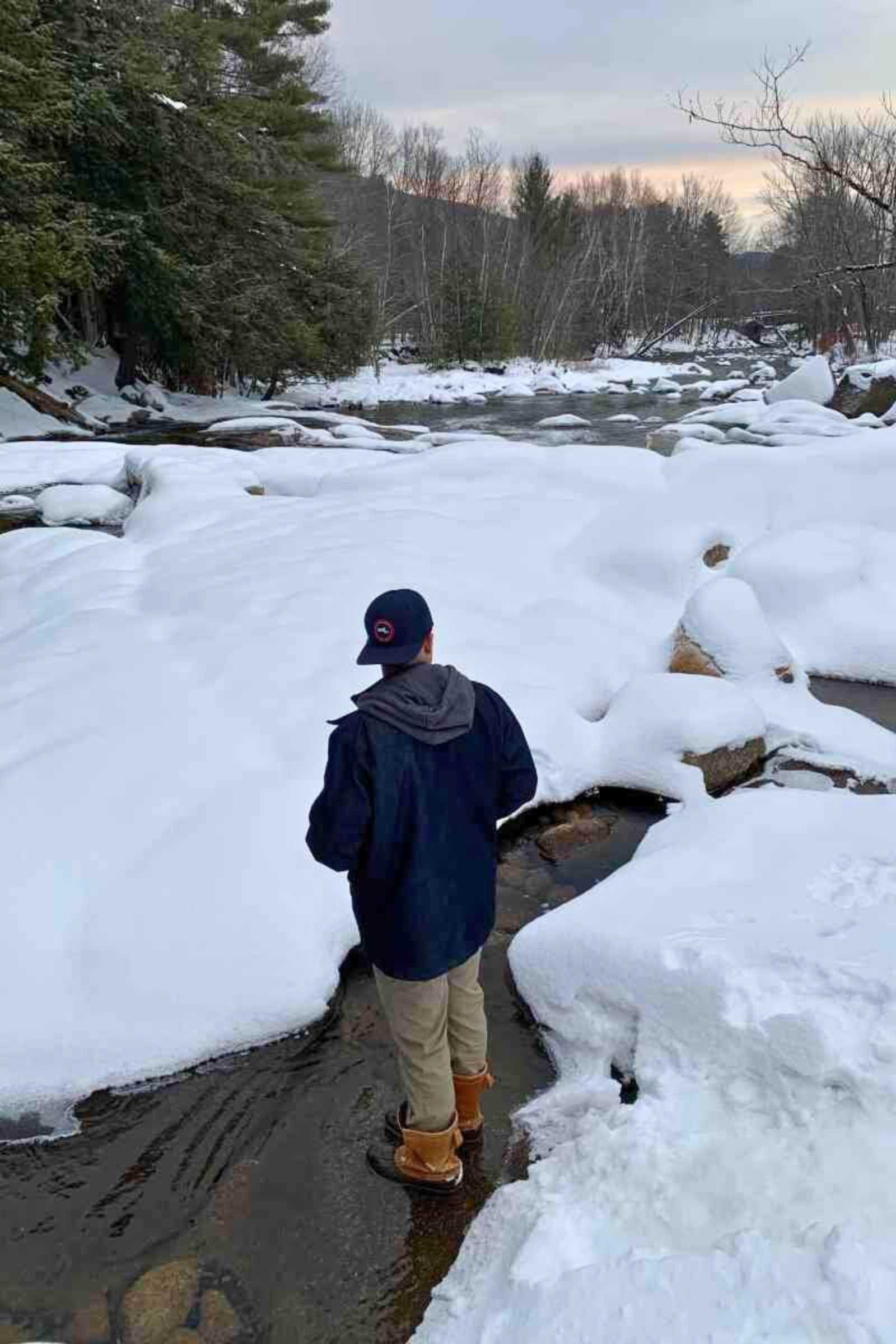
-
With supple leather uppers and durable rubber outsoles, these boots are easy to move, bend, and drive in. Our testers loved the ability to lace up or unlace as they needed for better fit no matter how thick of layers they wore. (This came in handy in winter flooding across New England, when wool socks and waterproof boots were a necessity.) The slight heel and chain-link tread design help to keep you from slipping and sliding across all terrains.
-
Sizing is the #1 comment amongst everyday users when it comes to L.L.Bean boots — besides the style. L.L.Bean advertises thefollowing guidelines for size and fit: “With light or midweight socks: Whole sizes, order one size down. Half sizes, order 1½ size down. Example: 9 or 9½, order a size 8. With heavyweight socks: Whole sizes, order your normal size. Half sizes, order one size down. Example: 9 or 9½, order a size 9.”
Our testers can confirm that, unless you plan to wear heavy socks with your uninsulated rain boots the majority of the time, it’s best to truly size down.
-
We love these boots for their stylistic versatility. They’re functional, waterproof (but don’t jump in too deep a puddle, water can still seep through the gusset if it soaks long enough — and the laces aren’t fully waterproof!), yet stylish enough to wear around town, even in the foulest of weather. (They’re made for the coast of Maine—can you tell?)
Theyare also built to last, just as L.L. himself designed over 100 years ago: our Massachussetts-native tester has owned (and thrashed) his uninsulated pair of Bean boots for nearly a decade, and still calls them “the waterproof-est and only boot I’ll wear during a New England spring or fall.” Still, should you run into any issues in the first year, they're backed by L.L.Bean's famous no-questions-asked return policy.
Other rain boots we tested
Bogs Kicker Rain Chelsea II
Sizes available: 7 - 14
Shaft Height: 5.9"
Footwear Closure: Slip on
Waterproof: Yes
For a low-riding, sporty-chic rain shoe (we couldn’t quite call this one a boot) to wear from the office to the grocery store and back home, the Bogs Kicker Rain Chelsea II held up comfortably. The BLOOM Eva molded footbeds (made from algae!) were great for walking around town, while the aeration and anti-stink features made our testers’ happy, as did the chevron treads. However, these shoes weren’t the easiest to get on, and the low profile didn’t protect our testers from any significant puddles.
Bogs Kicker Rain Chelsea II
The Bogs Kicker Rain Chelsea II was a solid short rain boot but weren’t quite as easy to get on as similar boots.
Sizes available: 5 - 15
Shaft Height: 18"
Footwear Closure: Slip on, over the ankle
Waterproof: Yes
A close runner-up for our Best Rain Boots for Work, the LaCrosse Alphaburly boots lived up to their name—they were burly, rugged, and great in tough weather conditions. Designed as waterproof and insulated hunting boots, the Alphaburly’s come to just below our tester’s knee; he appreciated the ability to tighten or loosen the fit with a buckle at the back, depending on his layering system. The rugged, deep tread made it easy to fight through slick conditions out in fields and in the woods.
At the end of the day, Muckboot Wetlands were more flexible and easier to perform a variety of tasks in, and so won out for our top pick.
Lacrosse Alphaburly Pro
Close up on the LaCrosse AlphaBurly Pro rain boots that we tested.
Sizes available: 7 - 14
Shaft Height: 16"
Footwear Closure: Slip on, over the ankle
Waterproof: Yes
“Simple, sturdy, and exactly what you’d picture when you think rain boots.” Our testers had nothing but good things to say about these rain boots, but while they appreciated the simplicity of them, that was it—the bells and whistles that made our winners the most comfortable, best to walk in, best to work in, etc. just weren’t in this pair of boots.
“I keep these by the back door to run out and chase the dogs, or pick up tree branches after a storm,” our tester stated. “They’re reliable and comfortable enough, but I just tend to pick other boots for all my longer or more challenging chores.”
Baffin Enduro
Close-up on the Baffin Enduro men’s rain boots.
Sizes available: 5 - 21
Shaft Height: 13.7"
Footwear Closure: Slip on, over the ankle
Waterproof: Yes
The Bogs Classic work boots are an insulated rain boot that is ideal for working in muddy conditions. While technically a winter boot (and is in our winter boots guide), you'll find people working in these boots year round. They're ideal for mud and cold, wet conditions. Ultimately, we decided they are too insulated to meet most three-season rainy conditions. You can read more in our in-depth review of the Bogs Classic Boots.
Bogs Classic High
Sizes available: 4 - 14
Shaft Height: 6"
Footwear Closure: Slip on
Waterproof: Yes
The Blundstone All-Terrain Thermal is a more robust version of the Blundstone Originals that we recommend for best rain boots for the city. As with the Blundstone Originals, they are waterproof. The All-Terrain are insulated, making them less suited for three-season conditions than the Originals. They're also nearly $100 more for that insulation.
We think most people looking for rain boots (as opposed to winter boots) will be happy with the Blundstone Originals and find they offer all the waterproofing you need. But if you like the Blundstone look and need more warmth, consider the All-Terrain Thermals. You can learn more in our in-depth review of the Blundstone All-Terrain Thermal boots.
Blundstone All Terrain Thermal
The traction on the sole of the LaCrosse Alphaburly rubber boots.
What To Look For In Rain Boots
Material
Choosing a good material requires three main criteria—comfort, durability, and waterproofness. Most rain boots involve some form of rubber, which is waterproof and used in many shoes to protect you from moisture. Sometimes this can mean the entire boot is made of rubber, such as the XTRATUF Legacy Boots, or sometimes just the lower foot and toes can be encased in rubber, like the classic L.L.Bean duck boots.
Like the Bean Boots, some boots use leather or suede for the uppers, which is generally waterproofed and seam-sealed. Nylon can also be waterproof treated, but generally isn’t as durable as rubber or suede.
Testing rain boots in a dark redwood forest.
Waterproofing
The most important aspect for rain boots is the waterproofness! Not every rain boot will be waterproof, and there are varying levels of waterproofness (or water resistance) that you should look out for when making your choice.
Water-resistant boots will initially repel water, but prolonged submersion (think walking through puddles or steady rain) will soak them quickly.
Waterproof boots can mean two things, as evidenced by our testing:
That the bottom of the boot is waterproof, like the rubber on L.L.Bean duck boots, but the uppers of the boot are not fully waterproof. This can happen on duck boots, even if the boot has been treated with a waterproofing solution and sealed seams, because the boots can still have leakage-access points, like tongue gussets, laces, or not-so-sealed seams.
The boot is waterproof treated and molded in one contiguously-shaped structure with minimal or no seams for water to access, or made from one external material for the upper shaft and lower part of the boots, like the XTRATUF Legacies.
Essentially, manufacturers can claim that their boots are waterproof for simply having a waterproofing treatment and waterproof bottoms—our testers know moisture, however, and take the statement “waterproof” seriously. If they can’t withstand submersion in a river bank, deep puddle, or boggy mud for an hour at a time, we won’t call them waterproof.
Traction
Traction is a key factor in rain boots, as rain tends to make surfaces slick and dangerous. Not every boot we tested had a mud tire-esque grip like the Muckboot Wetlands but others were made with tread in mind, like the XTRATUF Legacies or the L.L.Bean duck boots. .
If you’re just looking for a good rain boot to get you from the car to the coffeeshop, tread might not be your first priority; however, if you use your rain boots as work boots or shoulder-season-into-snow boots, tread could save you a bruised tailbone.
Many of our testers work and guide in their rain boots, whether it be on rivers, by the ocean, or on soggy rainforest trails. Their biggest tip? “Your rain boot tread should kind of look like snow tires. You want enough to grip through the mud down to dirt, and to catch if you step on a slippery root.”
Test your rain boots for comfort and fit while walking, but also while driving—especially if you work outdoors and get in and out of your vehicle often.
Insulation And Lining
Some rain boots come with insulation, as rain can also drop the temperature—or at least the humidity will make it feel colder. A light insulation can add comfort to the boot, but if you’re like the author and run warm, you may not want any insulation in your mid-summer rain boot.
Keep an eye on the sizing chart and description as you research your new rain boots. Some insulation may pack down, but it may also give you a snugger fit.
Comfort and Fit
You won’t wear the boots if they aren’t comfortable. The author knows that from experience when she showed up to downpours in Southeast Alaska in cheap, hard rubber Walmart rain boots. She quickly coughed up the money for pliable local favorites, XTRATUFs.
Look for rain boots that will fit your feet, ankles, and calves (if they’re taller) comfortably, but leave room for different thickness of socks. Too much room in the heel and ankle will give you blisters as the boot moves around on you, but the same can be said for too snug of a fit. Too loose of a boot will also trip you more easily as you fight to maintain balance as you walk.
The Baffin Endurance is a taller rain boot, which worked well in deep mud but was also more difficult to walk in on dryer surfaces.
Shaft Height
Personally, we love a taller rain boot. It gives you the advantage of stepping where you need to without fear of splashing, and makes it harder to swamp your boots with a taller shaft. However, tall boots are not always the most convenient, and they retain heat more easily than ankle-height boots, so if you plan to spend a lot of time in rainy weather, you may want to consider something closer down to the ankle for ease of pulling on.
Ease of putting on and taking off
As with snow boots, this is the age-old struggle. Rain boots should fit well enough that they’re easy to pull on with a little resistance as your foot goes in. That means you still have a snug enough fit that you’re not swimming in the boots, but you’ve left enough room to not crowd your feet.
Some boots use attached tabs on the heel for ease of sliding off with the other foot, like the XTRATUF Deck Boots, while others use another tab up front, like the Blundstone Chelsea boots.
Close-up on the Bogs Chelsea men’s rain boots.
Finding the perfect fit
SIzing Matters
Wear socks you'll use with the rain boots for accurate sizing. If you tend to run cold in the rain and wear thicker socks, make sure you size appropriately when choosing between sizes. Consider half sizes and width options for the best fit.
Measure calf and ankle
Test your rain boots while standing, walking, climbing, and squatting to get an idea of how they feel when your feet are in different positions.
Trust us, measurements count towards comfort! Measure your calf circumference for tall boots—some boots will even have a wide calf option, such as the XTRATUF Wide Calf Legacy, with an adjustable strap and buckle. If your desired boot doesn’t have a wide calf option, make sure that the ankle fit is still snug but not overly loose if you size up. Your boots should fit your calves comfortably, but not at the expense of ankle support!
Try them on
Seriously. Try them on before you slog through floods in your new boots. Put on both boots and stand up to assess your comfort level just hanging around. Ensure your toes have room to wiggle and the heels fit snugly, but don’t already start to rub. If they aren’t comfortable standing, they won’t be comfortable walking. We love sites like Zappos with easy and free returns to test out these boots without committing to them fully.
Walking & driving comfortably
Check to see if boots allow for natural foot movement. If they grip too tightly or slip around too loosely, you won’t walk comfortably. Not walking comfortably can lead to blisters and rolled ankles, both of which should be avoided.
You should also be able to drive comfortably in your rain boots! Some might be easier to drive in than others due to flexibility, like the XTRATUF Legacies versus the Muckboot Wetlands. However, flexibility is helpful across the board, from walking to driving to kneeling and stepping up. Look for comfortable, flexible options in your rain boots.
Adjustable features
Some rain boots, like the XTRATUF Wide Calf Legacy, sport adjustable features like buckles, laces, or straps for a comfier and more secure fit where it counts. These may prove useful for a more comfortable fit.
Orthotic consideration
If needed, consider using orthotic insoles for comfort. With that said, you may need to size up on your boots if you’re looking at using orthotic insoles—they can eat up space in generally narrow boot designs. You can learn more in our guide to orthotics for hiking footwear–the same principles apply to rain boots, too.
The Muckboot Wetland rain boots in deep mud in Maine.
Test on various surfaces
Take a longer walk on different surfaces to evaluate comfort. Check your boots out on sidewalks, mud, roots, rocks, and slick grass to make sure they hold up against all conditions. Don’t forget to splash through a few puddles to make sure they hold up!
Use size charts and reviews
Refer to the brand's size chart for guidance. However, in our experience, reading customer reviews for insights on fit is immensely more helpful. As someone who wavers between half sizes, customer reviews on narrow or large fit can make a huge difference.
Testing rain boots while disposing of compost.
Rain boots care and maintenance
Cleaning basics
Regularly rinse off your boots from mud and dirt with water. Use a mild soap for deeper cleaning when needed.
Drying properly
Wipe boots dry with a clean cloth after use. Avoid direct heat sources like radiators for drying. Make sure to place the boots in a well-ventilated area to avoid mold and mildew after rainy sessions.
Interior care
Turn boots upside down to allow water to drain. Use boot shapers, crumpled newspaper, or liter bottles to maintain the shape of taller boots. Use a boot dryer, fan, or hair dryer on cool to dry out interiors of boots. (Don’t leave the hair dryer unattended, though!)
Close-up on the Bogs Chelsea men’s rain boots that we tested.
Preventing odors
Allow boots to fully dry before storing to avoid funky odors, mold, and mildew. If they continue to smell after drying, sprinkle baking soda inside the dry boots to absorb odors.
Storage tips
Keep rain boots in a cool, dry place. Excess heat (like next to a radiator) can damage your boots and permeate funky smells. Avoid storing them in direct sunlight to prevent material damage.
Conditioning the material
Apply rubber conditioner to prevent cracking before storing for drier weather. Use specific products recommended by the manufacturer for specific materials.
Avoid abrasives
Do not use abrasive cleaners that can damage the surface of your boots—no wire brushes, no steel wool, etc. Instead, opt for using soft cloths or brushes for cleaning.
Regular inspection
Check for any signs of wear, cracks, or damage. Make sure to do so especially before putting away your rain boots for the drier weather. Timely maintenance can extend the life of rain boots.
Are rain boots eco-friendly?
Rain boots are essential for wet conditions, but their environmental impact varies widely depending on materials, production methods, and disposal practices. We here at Treeline Review think it's important to dive into some of the environmental manufacturing and life cycle analysis of bigger ticket gear items like boots. Here’s what to consider when looking for sustainable rain boots:
Materials matter
PVC vs. natural rubber: Many traditional rain boots are made from polyvinyl chloride (PVC), a plastic that is non-biodegradable and difficult to recycle. In contrast, natural rubber is a renewable material that decomposes more easily and has a lower environmental footprint.
EVA alternatives: Some brands use EVA (ethylene-vinyl acetate) for lightweight, flexible rain boots. While EVA is more durable than PVC, it is still a synthetic material with limited biodegradability.
You can learn more about sustainability in rubber and rubber alternatives in our yoga mats guide.
Manufacturing and sustainability efforts
Ethical sourcing: Look for brands that source sustainably harvested rubber and use eco-friendly dyes and adhesives. Note that some brands advertise "non-Amazon rubber" as rubber plantations may be linked to Amazon deforestation.
Low-impact production: Some manufacturers prioritize carbon-neutral production or use recycled materials to reduce waste.
Fair labor practices: Choose boots from brands that follow ethical manufacturing standards as this can ensure workers are treated fairly.
Durability and lifespan
Longer-lasting boots reduce waste: Investing in high-quality, repairable boots extends their lifespan and keeps them out of landfills. If you love your boots, you are less likely to want to replace them.
Get a style and color you like: If you love your boots, you are less likely to want to replace them and more likely to hold onto them for a long time.
Recyclable and biodegradable options: Some companies offer take-back programs or use compostable materials in their designs.
How to reduce your footprint
Choose brands with sustainability initiatives: Look for rain boots made from natural rubber, recycled plastics, or plant-based materials.
Proper care and maintenance: Extending the life of your boots through regular cleaning and proper storage minimizes unnecessary replacements. See our care and maintenance section on how you can best take care of your rain boots.
End-of-life disposal: If your boots wear out, check for recycling programs or upcycling options to keep them out of landfills.
Opting for eco-conscious rain boots helps minimize your environmental impact of your gear.
FAQ
-
Not always. Manufacturers can claim that their boots are waterproof for having a waterproofing treatment and waterproof bottoms. However, if boots cannot withstand submersion in a river bank, deep puddle, or boggy mud for an hour at a time, we won’t call them waterproof.
-
Absolutely! Not every rain boot is insulated, but waterproof boots are the first step towards keeping you warm and dry. Our testers wear Muck Boots and XTRATUF Legacies year round, including winter with the addition of warm ski socks. See our guide to Best Men's Winter Boots if you know you'll be in freezing conditions.
-
They can, but keep an eye on the leaky spot. Waterproof patches can be applied, much like repairing a leaky boat. In a pinch, even a piece of duct tape over the leaky area (inside and out) can help keep the water out.
-
If your boots aren’t comfortable enough to wear for miles at a time, or take more than a week to break in, it’s time to look for new boots. Our testers walked for miles a day in their boots to make sure comfort and waterproofness were still equally comparable.
-
Natural materials can be harvested in environmentally-friendly processes. Natural rubber is naturally waterproof, and environmentally-conscious suede can be treated with waterproofing, as well.
-
They are definitely helpful for keeping your feet dry and warm, but they can also retain moisture and heat. Make sure to dry your boots out thoroughly and keep a watch on your feet for too much dampness.
We tested men’s rain boots side-by-side outdoors and in controlled settings. Here, we soaped up a linoleum floor and slip-and-slided in rain boots to get an idea of their traction on slippery surfaces.
How we researched and tested
To ensure that we reviewed the best boots for the rainy season, we researched the most popular rain boots and came up with over 30 different choices.
We then tested the most promising and popular mens rainboots from Alaska to California to Iowa and Maine.
Our testers worked on farms with knee-deep mud, fished on slippery decks in the Pacific and Atlantic, hiked in temperate rainforests, and responded to ambulance and firefighting emergencies in calf-high flooding.
Using the XtraTuf Legacies while rafting in Dyea, AK.
Each of these winter boots was thoroughly reviewed and highly recommended by everyday users on platforms such as REI, Backcountry.com, and Amazon.
From these latter sites, we verified reviews against FakeSpot, a site which flags falsified or tampered reviews, to verify authenticity.
After review of outdoor media, real-life customer feedback, our own expertise, and comments from outdoor professionals who make their living on snow, we narrowed a list of over 50 promising boots down to our top eight winners.
To be considered for each of these categories, we measured each pair of boots against standardized criteria: good tread, waterproofness, great fit, and ease of pulling on and taking off. Most importantly, they had to be considered waterproof by a majority of customer reviews. From there, we narrowed our criteria to our specific categories.
About the author / why you should trust us
The author guiding on the river in Alaska, wearing the XTRATUF Legacy boots.
Rain is a welcome commodity for this author. I spent years in Southeast Alaska’s temperate rainforest, hiking and rafting daily in inches of water a day. Moving to rain-soaked New England reinforced that. I wouldn’t give up the rain for a bone-dry desert day, ever—but I do prefer to keep my toes warm.
I’ve been a backpacking, rock climbing, hiking, and rafting guide in Alaska and Colorado; many of my “summer” seasons up north involved more inches of rain than people in town. Spending 3 years on volunteer fire departments in Alaska and Maine has sent me out on Search and Rescue calls in downpours, ambulance calls in snowdrifts and lake-sized puddles, and fire calls where water would freeze as soon as it left the hose.
My gear expertise stems from 6 years of gear reviews for Backpacker Magazine, 6 years of guiding, years of wet-weather adventures, and a plethora of gear-head friends. In addition, I’ve written outdoor lifestyle pieces for REI’s Uncommon Path Magazine and Powder 7 Ski Shop’s Lift Line Blog. (For additional publications and upcoming articles, check out my website.)
Let it be known: no one in my family (including myself) is sponsored, an ambassador, or an employee of any of the companies mentioned here. This is unbiased, and we do this to help you find the best product for the price. Treeline Review doesn’t accept sponsored content, native advertising, or paid reviews.
You can read all of my articles on my author page.


















